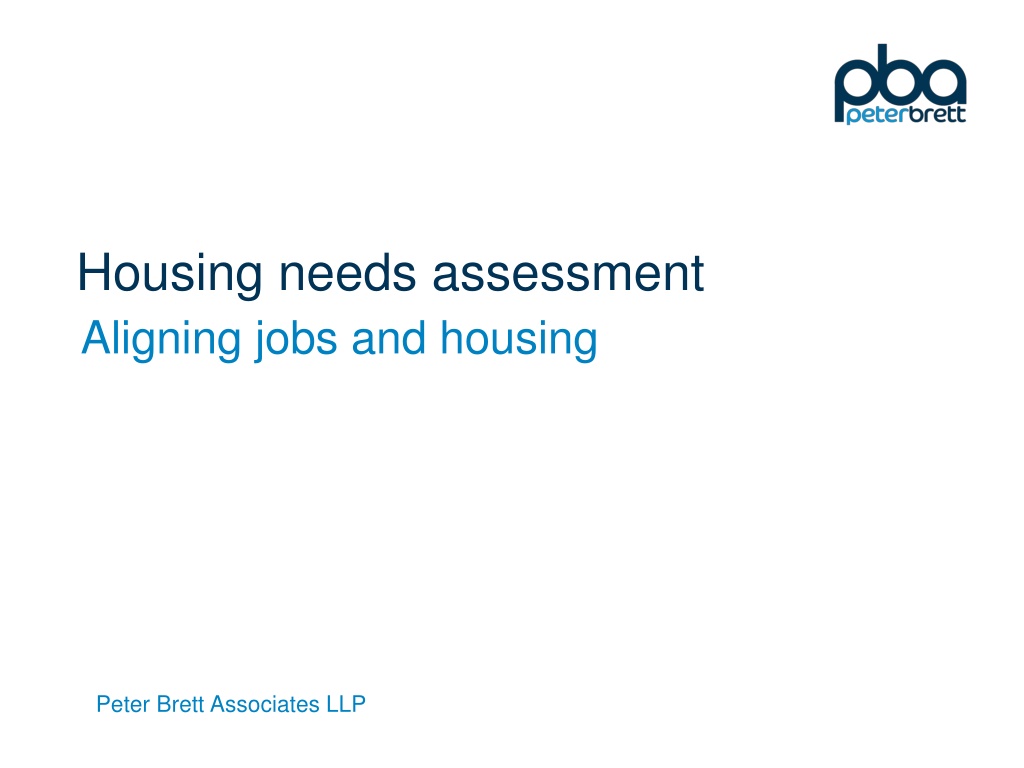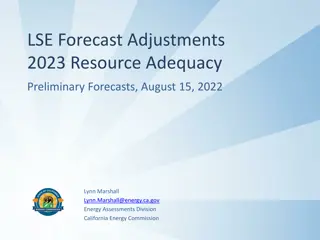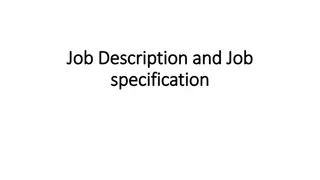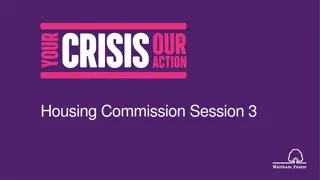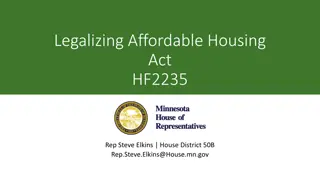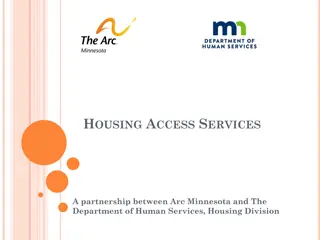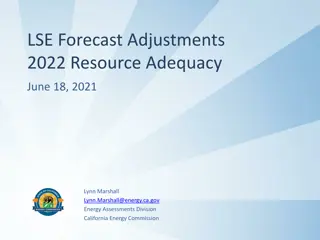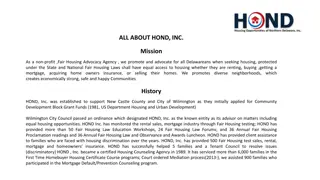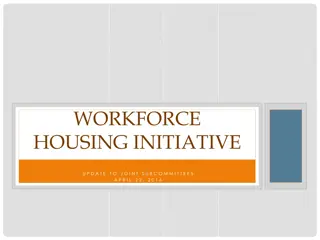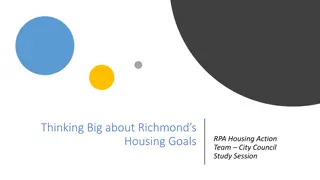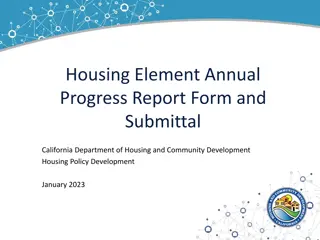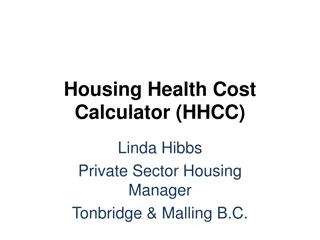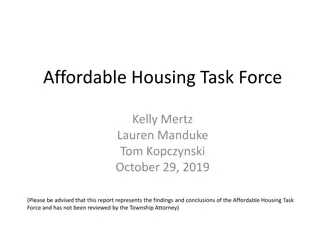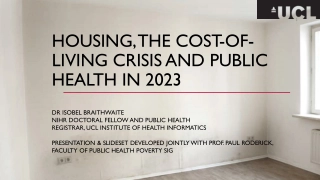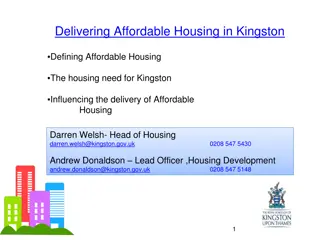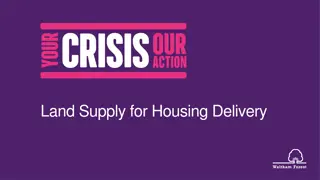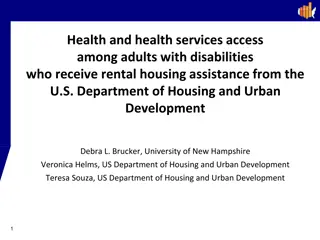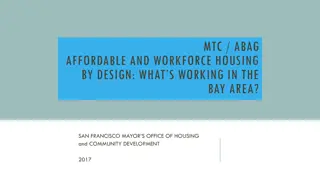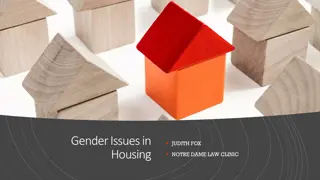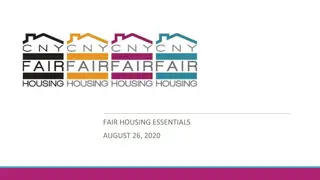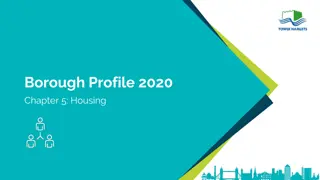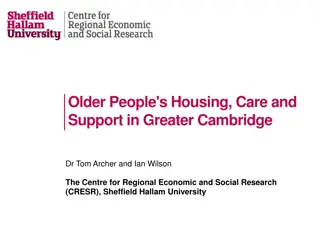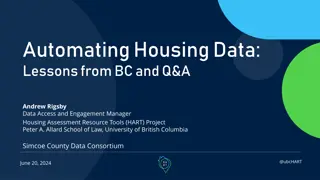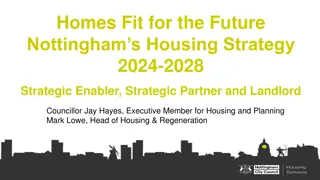Challenges in Aligning Job Forecasts with Housing Needs and Population Growth
The housing needs assessment discusses the challenges of aligning job forecasts with housing demands and population growth. It cautions against blindly translating job forecasts into housing needs without considering demographic projections and commuting ratios. Real-life examples highlight the importance of auditing job forecasts and ensuring consistency with policy goals. Recommendations include working closely with forecasters to understand the job-to-population relationship and adjusting forecasts as needed.
Uploaded on Oct 01, 2024 | 0 Views
Download Presentation

Please find below an Image/Link to download the presentation.
The content on the website is provided AS IS for your information and personal use only. It may not be sold, licensed, or shared on other websites without obtaining consent from the author. Download presentation by click this link. If you encounter any issues during the download, it is possible that the publisher has removed the file from their server.
E N D
Presentation Transcript
Housing needs assessment Aligning jobs and housing Peter Brett Associates LLP
What not to do Buy a job forecast Translate the jobs into population into households & houses Assuming fixed commuting ratios Infer number of dwellings needed Why not? The forecast already assumes a given population And implicitly households and dwellings But not the same as you calculate at the end In economically buoyant areas usually fewer Because the forecaster s jobs-to-population factors are different Especially commuting ratios are not fixed In real life commuting adjusts to supply-demand shifts Objectors have to ask just one question Show us the population figures behind your job forecast please And your numbers go in the bin
A real-life example Experian forecasts 31,000 net new jobs in the plan period They also shows population growth In small print at the bottom 45,000 extra residents Taken from ONS 2010-based projections The planners didn t look at that They calculate that 31,000 new jobs needs 74,000 new residents Hence (say) 32,000 new houses Makes no sense Happens all the time
What to do Look at job forecasts Assuming the correct population As per preferred demographic projection Audit the forecasts Do you believe them? Are they consistent with policy aspirations? Are the commuting implications Credible? Acceptable / policy-friendly?
What to do continued If Yes End of (almost) Make sure employment land policies use the same numbers If No Produce new job numbers (demand) Make sure they re reasonably realistic Don t get carried away Show why you think the forecast is wrong Translate into resident population > housing Not necessarily fixed commuting ratios Take an intelligent view Ideally working with the forecaster Understand how their jobs-to-population relationship works The models vary If you don t like the result Reconsider the job number
In short Plan for enough housing to Support the number of jobs you are planning for Which may not equal latest (or any) forecasts Consistent with reasonable commuting patters Which may not be the same as today In deciding how many jobs to plan for Don t just pick up any old forecast Consider job forecasts critically Are their demographic numbers consistent with yours? Are they otherwise credible? Compatible with your objectives? If not, what can you realistically change? Keep it simple
